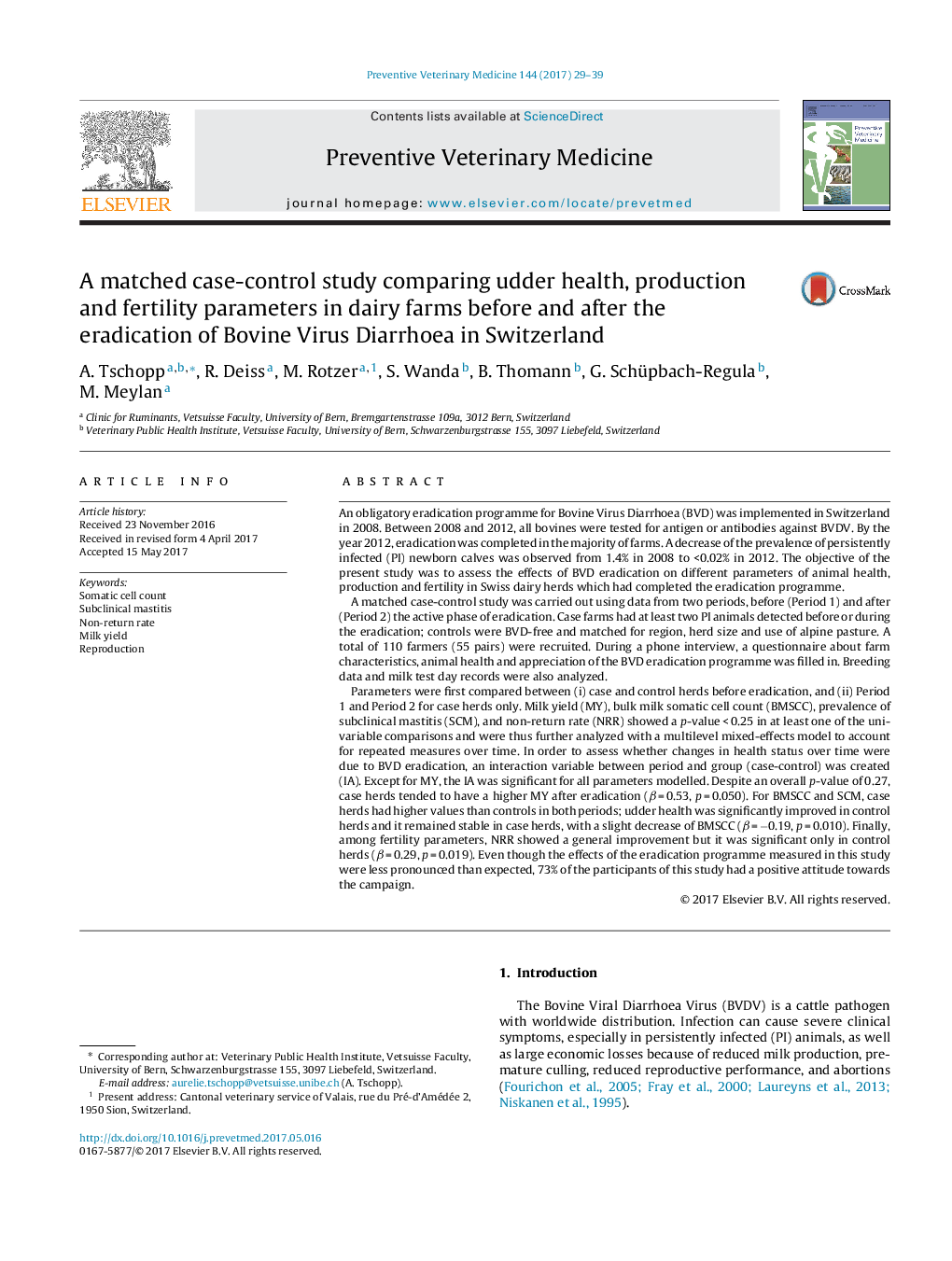| Article ID | Journal | Published Year | Pages | File Type |
|---|---|---|---|---|
| 5543707 | Preventive Veterinary Medicine | 2017 | 11 Pages |
Abstract
Parameters were first compared between (i) case and control herds before eradication, and (ii) Period 1 and Period 2 for case herds only. Milk yield (MY), bulk milk somatic cell count (BMSCC), prevalence of subclinical mastitis (SCM), and non-return rate (NRR) showed a p-value < 0.25 in at least one of the univariable comparisons and were thus further analyzed with a multilevel mixed-effects model to account for repeated measures over time. In order to assess whether changes in health status over time were due to BVD eradication, an interaction variable between period and group (case-control) was created (IA). Except for MY, the IA was significant for all parameters modelled. Despite an overall p-value of 0.27, case herds tended to have a higher MY after eradication (β = 0.53, p = 0.050). For BMSCC and SCM, case herds had higher values than controls in both periods; udder health was significantly improved in control herds and it remained stable in case herds, with a slight decrease of BMSCC (β = â0.19, p = 0.010). Finally, among fertility parameters, NRR showed a general improvement but it was significant only in control herds (β = 0.29, p = 0.019). Even though the effects of the eradication programme measured in this study were less pronounced than expected, 73% of the participants of this study had a positive attitude towards the campaign.
Related Topics
Life Sciences
Agricultural and Biological Sciences
Animal Science and Zoology
Authors
A. Tschopp, R. Deiss, M. Rotzer, S. Wanda, B. Thomann, G. Schüpbach-Regula, M. Meylan,
